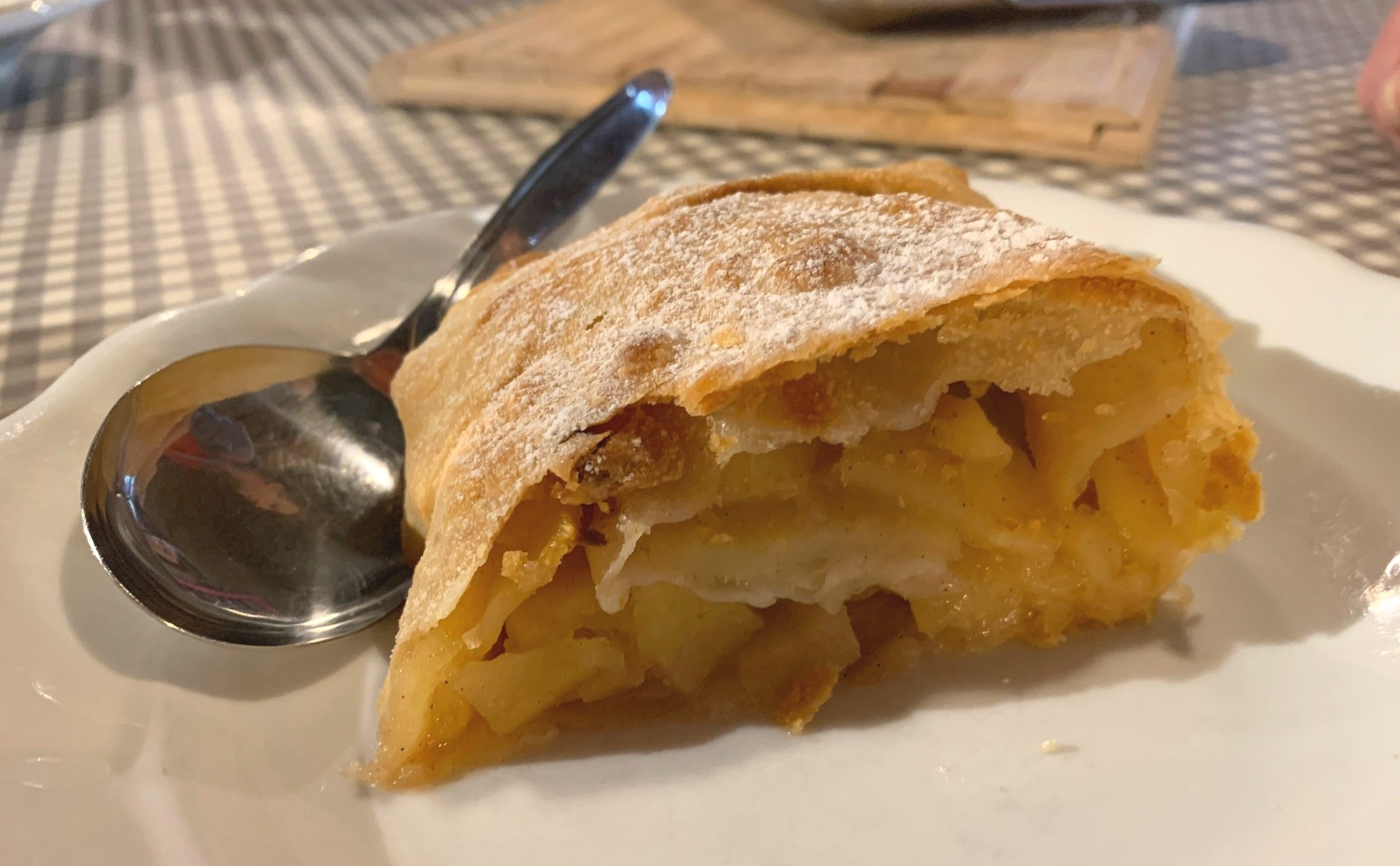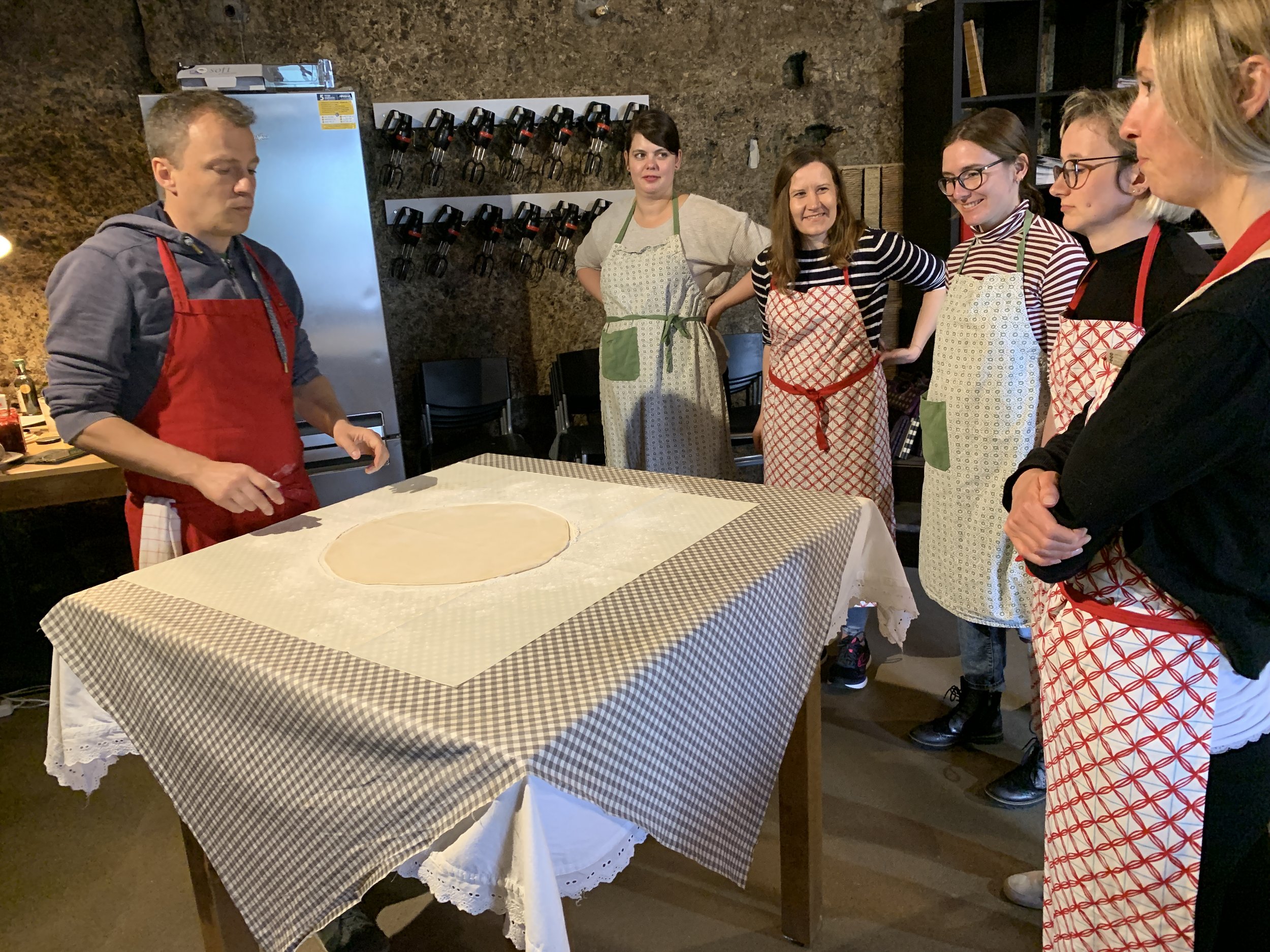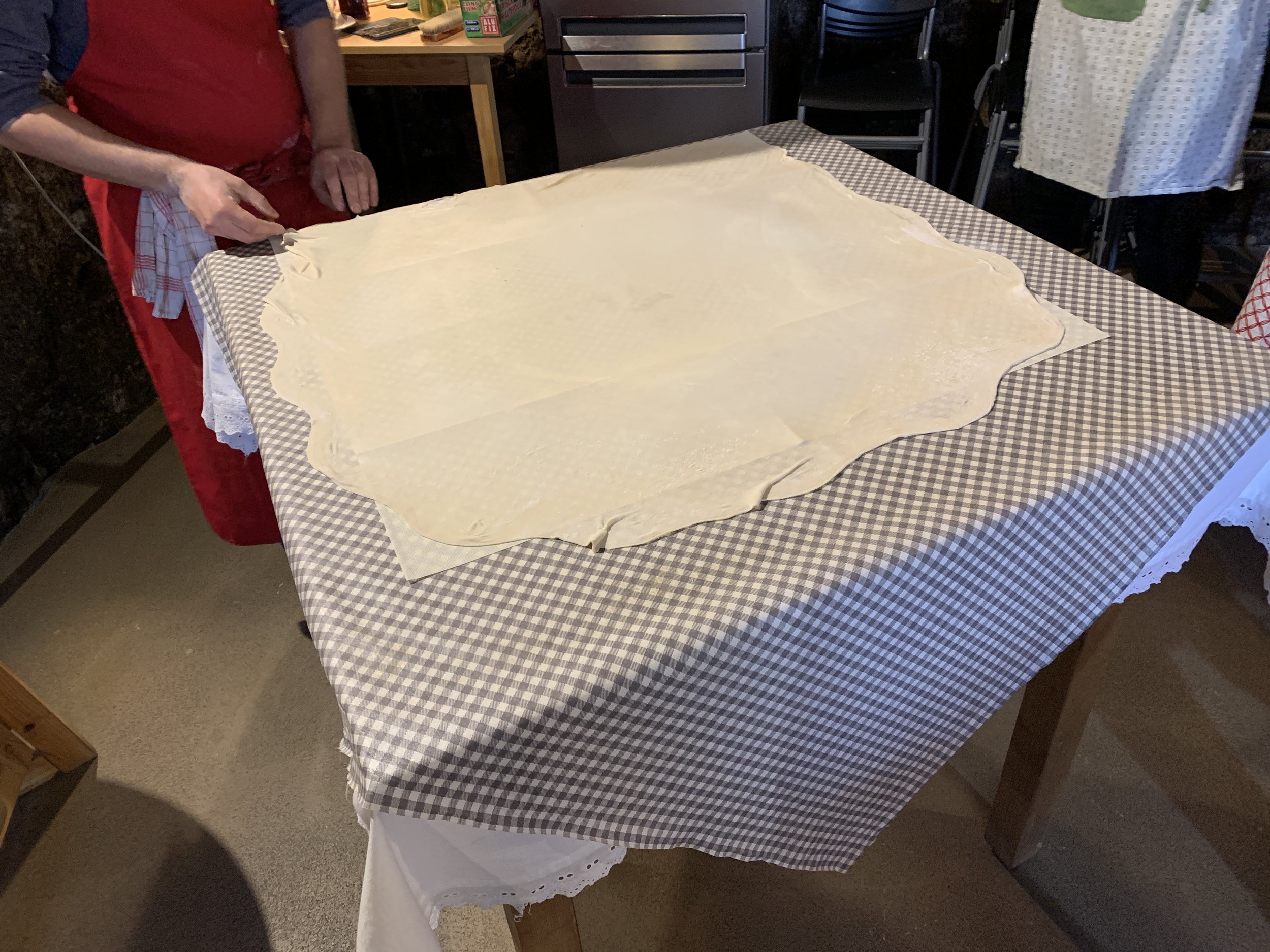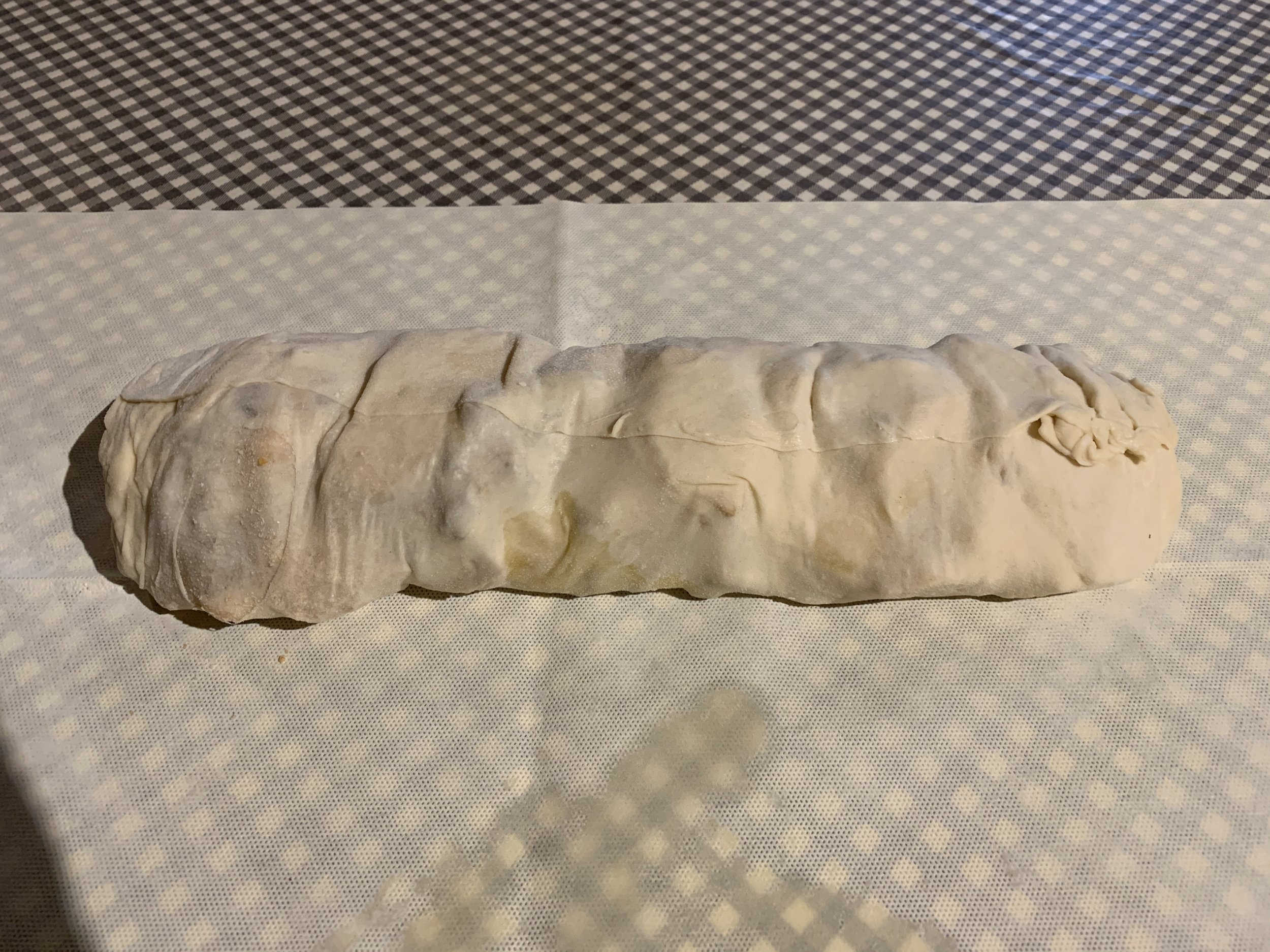Apfelstrudel in Salzburg
/As is my wont when traveling in Europe, I like to incorporate a pastry class or two into my itinerary. Even if it’s a topic with which I’m familiar, I love to quietly observe the instructor, the process, the group interactions and invariably pick up a tip or two. I might even chime in with a baking nugget of my own.
My only recollection of making apple strudel was back in the early days of my pastry schooling at Apicius in Florence. Since strudel is classically Austrian, one might ask - strudel in Italy?? Why yes as it turns out. Part of the curriculum at Apicius focused on specialties from all regions of Italy, each having its own culinary charm. In Northern Italy strudel is popular in the Trentino-Alto Adige which borders on Austria and, as a matter of fact, once belonged to Austria. As I envision the Apicius teaching kitchen, I see in my mind’s eye a large sheet of dough that we stretched and pulled until paper thin before rolling it around an apple filling and baking it to perfection.
As Steve and I were planning this trip I looked for a strudel class in or around Munich but alas, no dice. But never fear - the trusty internet led me to Edelweiss Cooking School in Salzburg, Austria just over the German border. We had Salzburg on our hit list so it seemed like the perfect thing to do.
View of Salzburg’s altstadt
We took the train from Munich to Salzburg, the bus into the old town then a short walk to Ursulinenplatz 9 where we found the school, literally built into the rock of Mönchsberg, a large part of the backdrop of the old city. Steve dropped me off and ambled off for some cemetery tromping.
The school’s space is cave-like with light and shadows playing off each other. Quick aside - I’ve done my best to lighten and reduce the shadowing in my photos - please understand!
Chef Johann was on hand to welcome me along with the 5 young German women from Augsburg who appeared just behind me. They were on a much belated bachelorette outing (thanks COVID) with some surprise activities planned for the bride-to-be (who actually was married three years ago!!). We were ready for action.
Johann began with a demo of mixing the apple filling and the initial rolling out of the strudel dough which had been made and allowed to rest for a couple of hours before the class. He then gave us a stretching demo to shape the dough into a larger rough square, thin enough to see through.
Preliminary round
All stretched out
He proceeded with the filling and rolling up of the strudel and then it was our turn. My compatriots grouped off at two tables as a pair and a trio, while I was stationed at a table alone with Johann as my partner.
First up - the apple filling. As Johann pointed out, strudel is very forgiving and something you can adjust to your whims. Add a bit more sugar or cinnamon to the apples, add dried cherries or cranberries instead of raisins, add nuts, use apricots or a savory filling like cabbage - all kinds of options.
The apple work had been completed for us - peel, core, slice about 4 cups of apples (e.g. Golden Delicious, Granny Smith, Gala or even a mix), sprinkle on a couple tablespoons sugar, a couple of shakes of cinnamon and a couple tablespoons raisins. Mix it up and set aside. Remember - your dough must be made ahead and ready for you, so wait to mix up your apples until assembly time.
Johann’s dough recipe is simple: 210 g / 1.66 cups flour (recommended ~12% protein which FYI is in between King Arthur’s all purpose and bread), 125 ml / 1/2 cup water, 1 tablespoon neutral oil like sunflower or canola (consider olive oil for a savory strudel) and 1/4 teaspoon salt. Blend all in a bowl and knead by hand to a smooth, silky dough. Lightly oil the dough, cover and rest two hours.
NOTE: I did a quick review of a couple of other strudel recipes, both of which use egg yolk and vinegar (helps tenderize) in the dough and one which utilizes a long mixing time and an overnight rest in the fridge before proceeding. Hmmmm . . . . . . future project methinks.
Rolling and stretching time! It’s very helpful to have a square table, something you can walk around to stretch the dough. Cover the work surface with a large tea towel, linen or oilcloth tablecloth, flour it and place the dough in the center. Flour the dough surface, turn over and flour again; roll out to a round (mine is rather oblique). Johann cautions not to lift/rotate the dough as you might for tart or pie dough - just roll.
Now using the backs of your fisted hands, get under the dough and stretch it out all around to a rough square. The dough may tear but is forgiving and will be wrapped up around the apples anyway.
Whoa! Mine isn’t nearly as nice as Johann’s.
Trim the thicker, irregular edges with a pizza cutter then drizzle 2-3 tablespoons melted butter over the dough (don’t brush since it may tear the dough) then a couple tablespoons bread crumbs. These help absorb some of the liquid from the apples during baking.
Place the apple mixture over the lower third of the dough, fold the sides over and the bottom up . . .
then using your cloth as a lifter, roll up the whole thing, leaving it seam side up. Snug it up a bit at the ends if needed so it will fit into your pan. Pretty rough and tumble, eh?
Have a buttered or parchment lined 1/2 sheet pan or metal 9-ish by 13-ish baking pan at the ready and, using Johann’s method, pick up the strudel with your towel or cloth and gently roll it onto/into the pan so the seam side is down. Brush melted butter over it and bake in a preheated 400º oven for about 30-35 minutes.
We all gathered round the table for a lunch of delicious goulash and a sampling of the soufflé-like Salzburg specialty Nockerl (a future post perhaps?) that we had whipped (literally!) together during class.
Salzburger Nockerl
Then it was time to sample our strudel, dusted with confectioner’s sugar and hot out of the pan.
Crisp crust, mellow apple flavor, not too sweet - all in all a worthwhile endeavor and a fun experience in old Salzburg. Thanks Johann! I look forward to making it at home, especially when autumn rolls around.
Steve and I finished our Salzburg visit with a boat ride on the Salzach River and a stroll through Mirabellgarten (Sound of Music anyone?) before our return train ride back to Munich.
Happy spring and take care until next time. Who knows what I may have up my sleeve.



























